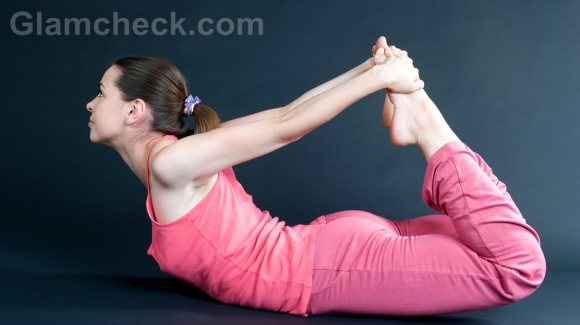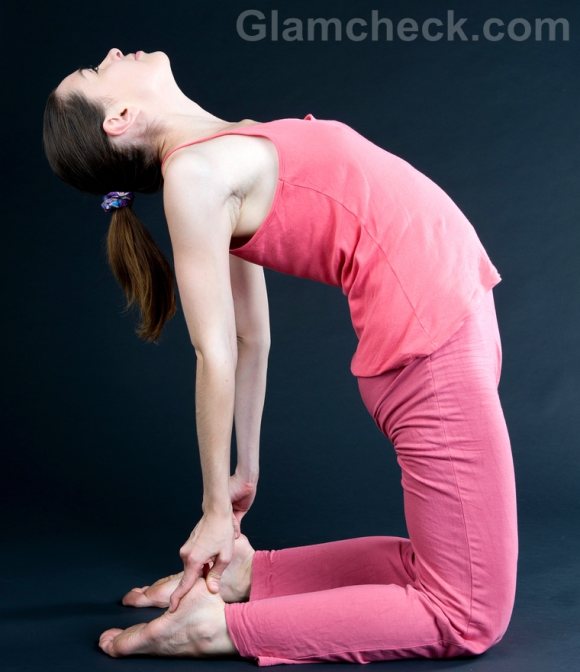The essence of any form of Yoga is to facilitate a holistic wellbeing through natural exercises that promote the better functioning of all body systems and guides the mind towards a relaxed and clam state of being.
 Bikram Yoga, despite being a relatively new form which was introduced in the seventies by the famous Yoga Guru Bikram Choudhury has acquired tremendous popularity and acceptance all over the world. The rapid acceptance of this form of workouts for a healthier body and active mind has been significant in the US where people from all walks of life including athletes, artists, actresses and even scientists have adopted this principle for enhancing their performance. Also referred to as the ‘Hot Yoga’ this form of workout comprises of 26 basic Asanas which are performed in a given sequence in a regulated environment. Though there have been a few controversies regarding the methods and actual benefits of Bikram Yoga, millions of people across the world have reported to have immensely gained from its practice and therefore recommend its application for everyone.
Bikram Yoga, despite being a relatively new form which was introduced in the seventies by the famous Yoga Guru Bikram Choudhury has acquired tremendous popularity and acceptance all over the world. The rapid acceptance of this form of workouts for a healthier body and active mind has been significant in the US where people from all walks of life including athletes, artists, actresses and even scientists have adopted this principle for enhancing their performance. Also referred to as the ‘Hot Yoga’ this form of workout comprises of 26 basic Asanas which are performed in a given sequence in a regulated environment. Though there have been a few controversies regarding the methods and actual benefits of Bikram Yoga, millions of people across the world have reported to have immensely gained from its practice and therefore recommend its application for everyone.
Special Features of Bikram Yoga
The primary differences of this form of Yoga from other conventional methods lie in the sequence of the Asanas and the environment of practice. All Asanas of Bikram Yoga are required to be practiced in conjunction with the basic breathing technique of Pranayam. The other glaring aspect of difference is its recommended practice environment which is a room temperature of 108 F and 40 % humidity which that justifies it being termed as Hot Yoga. The founder of this stream of Yoga, Bikram Choudhury explains the necessity of such an environment for ensuring that the stretching is sufficiently deep and injuries arising out of the physical workout are minimized. This environment also ensures that the benefits of the Yoga reach deep into each and every system that they are aimed at to provide the intended beneficial effects. In this form of Yoga, there are standard 26 postures which have to be practiced by beginners as well as more experienced students. However the level of complications of each Asana is reduced at the initial stages in order to help beginners get a grasp of the techniques involved.
26 Postures of Bikram Yoga and Their Implications

- Standing Deep Breathing Pranayam: This is the most basic exercise of Bikram Yoga that is aimed at regulating the breathing process in order to help counter emphysema, bronchitis and other respiratory ailments.
- Half Moon Pose: Involving a bend sideways, this particular Bikram Yoga posture this exercise is extremely helpful in strengthening the abdominal muscles, torsi, deltoids and trapeziums. It is also beneficial in reducing waistline, hips, buttocks and thighs.
- Hands to Feet: Performed by getting the arms close to the knees in sitting position this Yoga posture is considered helpful for improving spinal flexibility and enhanced blood circulation to various muscles, ligaments and tendons in the body.
- Awkward Pose (Utkata Asana): This Yoga Asana is similar to the chair pose with the back straight and arms stretched which is considered useful in curing rheumatism and arthritis related problems.
- Eagle Pose: Requiring a person to stand twisted like an eagle, this posture of Bikram Yoga improves the flexibility of the ankles and hips while enhancing the blood circulation in the reproductive organs and the kidney.
- Standing Head to Knee: While being in standing position one of the legs require to be kept horizontal while bending the head towards it. This Asana is aimed at improving balance and giving better flexibility to the rib cage. It additionally helps improve concentration, determination and patience in the person.
- Balancing Stick: Quite similar to the previous one, this Yoga posture has superior benefits in boosting the blood circulation by clearing the arteries and the functioning of the cardiovascular system, spleen, liver and pancreas.
- Standing Separate Leg Stretching Pose: Done with legs spread and head bent forward till it touches the ground, this Bikram Yoga Asana is great for improving concentration and also checks diabetes, abdominal obesity and constipation.
- Triangle Pose: It is considered highly effective in improving coordination between the bones, joints and muscles while providing cure for heart and lungs malfunctions.
- Standing Separate Leg Head to Knee Pose: Similar to the earlier version this Yoga posture requires the legs to be stretched in forward and rearward directions and is essential for helping the thyroid glands in functioning better for improved immunity.
- Tree Pose: The person has to stand in a pose similar to a tree and is wonderful for all those trying to increase their balance, posture and elasticity.
- Toe Stand: By putting the entire weight of the body on the toes this Yoga exercise helps in strengthening the toes, ankles and feet.
- Dead Body Pose (Savashana): Similar to other conventional Yoga forms, this exercise helps improve concentration while reducing stress, tension and anxiety from the mind.
- Wind Removing Pose: Requiring alternate bending of legs in laying down pose, this Bikram Yoga Asana is good for the colon and helps constrict the entire digestive system for improved assimilation of food.
- Cobra Pose: This Yoga pose helps reduce arthritis and rheumatism symptoms by making the spine stronger and suppler.
- Locust Pose: By strengthening the upper spine this pose is helpful in addressing problems like sciatica and slipped discs.
- Full Locust Pose: By strengthening the middle spine it helps treat problems like scoliosis and spondylosis.
- Bow Pose: The person has to bend the entire body while lying in the stomach in the form of a bow by holding the ankles from behind the back. This Yoga method opens up the rib cage and facilitates complete expansion of the lungs for better breathing.
- Fixed Firm Pose: This Yoga pose improves the strength and flexibility of the lower spine and is wonderful for relieving lower back pains.
- Camel Pose: Involving the bending of the back while on the knees, this Bikram Yoga Asana is aimed at arousing the nervous system and improving the flexibility of the cervical parts.
- Half Tortoise Pose: By bending forward on the knees this Yoga posture claims to enhance longevity and provide relief from asthma and indigestion.
- Rabbit Pose: This Bikram Yoga pose requires bending for a longer period with the aim of increasing the flexibility of the spine, back and shoulder joints.
- Head to Knee Pose and Stretching Pose: This particular Bikram Yoga posture is known to have amazing benefits on the lymphatic system and improved the functioning of liver, pancreas and thyroid.
- Spine Twisting Pose: By improving blood circulation to all parts of the spinal chord this Yoga Asana has a soothing effect on the entire nervous system.
- Blowing In Firm Pose: Another of the amazing Bikram Yoga poses, this Asana helps improve the lungs capacity and efficiency in breathing oxygen.
As is evident from the list of actual benefits that can be expected from the regular practice of all the Asanas of Bikram Yoga in a particular sequence, this workout is a complete solution for betterment of the entire body and its associated systems. This form of Yoga additionally helps the mind to focus better through improved functions of the nervous systems and enhances the capability of the mind in terms of patience, retention, concentration and calmness. Due to these numerous benefits of the Bikram Yoga which has been experienced by most of the followers of this principle, its status has been elevated from a mere workout regime to a complete way of living that guarantees holistic wellbeing of the individual. The powers of Bikram Yoga have been harnessed by many people for achieving higher goals in life and living in harmony and peaceful coexistence with their surroundings.
Bikram Yoga should not be performed by pregnant women. Others, who are interested, should always practice it under the supervision of a trained yoga guru.
Image: Shutterstock
